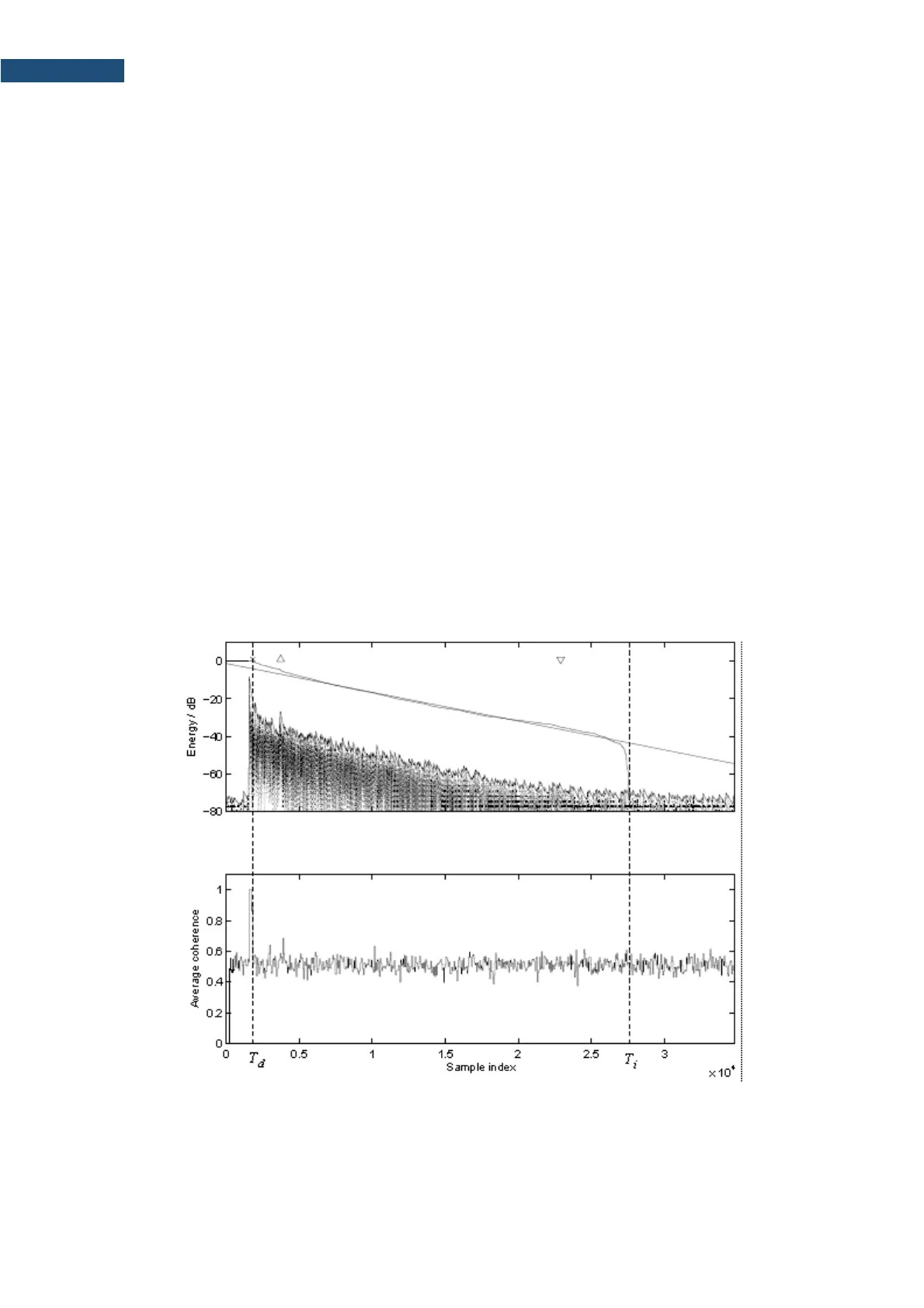The measurement time in this method consists of:
• The time between markers t
on
and t
off
in which the omnidirectional sound source emits acoustic power
and the SVAN xxx analyser measures the actual sound pressure level.
• The time between markers t
off
and t
trig
in which the omnidirectional sound source is switched off and the
SVAN xxx instrument waits for trigger condition fulfilment.
• The time between markers t
s
and t
trig
registered since the trigger condition fulfilment back till point t
s
to
allow recognising the beginning of the decay region. In the SVAN xxx instruments this time is equal to
the Time Step (path: <Menu> / Measurement / RT60 Settings) parameter value multiplied by 50.
• The time between markers t
trig
and t
e
registered since t
trig
forward to record whole decay curve together
with significantly long period of the noise level. This time in SVAN xxx instruments is adjusted by
Recording Time (path: <Menu> / Measurement / RT60 Settings) parameter.
The above graph shows that the proper setting of the Recording Time value is very important. The
registration time has to be long enough to acquire sufficient number of background noise level values. In
other case the decay curve region could not be properly analysed or decay region could not fulfil the dynamic
condition mentioned above. It is recommended to set the Recording Time parameter two times longer than
expected reverberation time.
➢ Impulse method
In the Impulse method, Reverberation Time is computed by using the reverse-time integrated impulse
response. This way of measuring sound decay was introduced firstly by M. R. Schroeder in two historical
articles:
o New Method of Measuring Reverberation Time, Journal of Acoust. Soc. Am.1965
o Integrated-Impulse Method Measuring Sound Decay without Using Impulses, Journal of Acoust. Soc.
Am. Vol. 66(2) 1979
